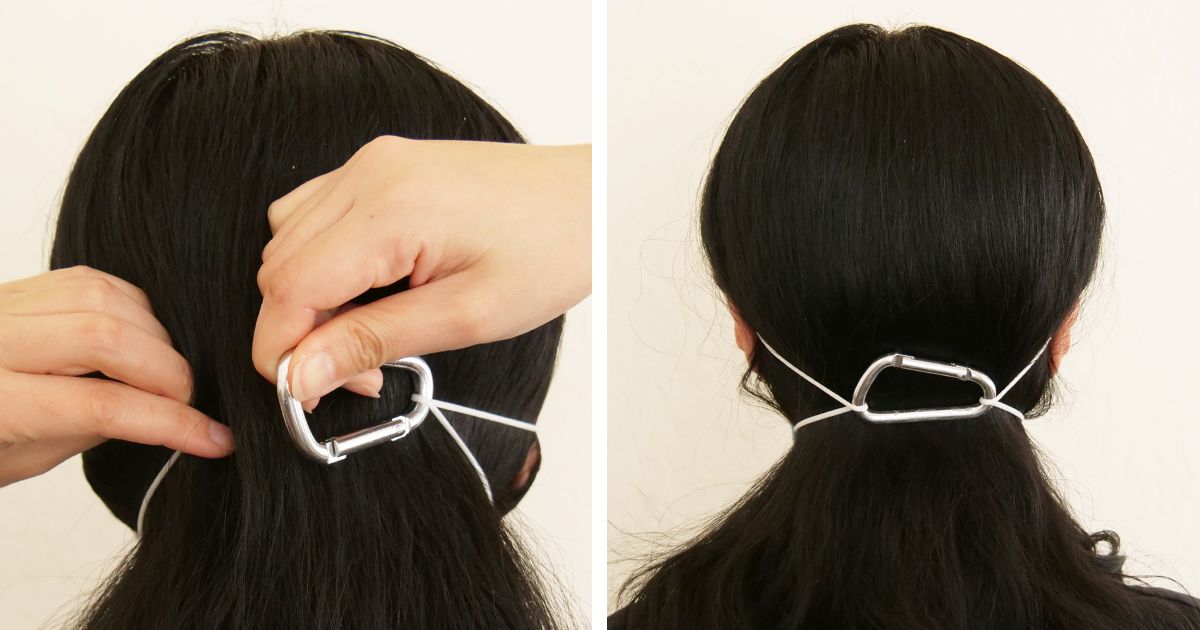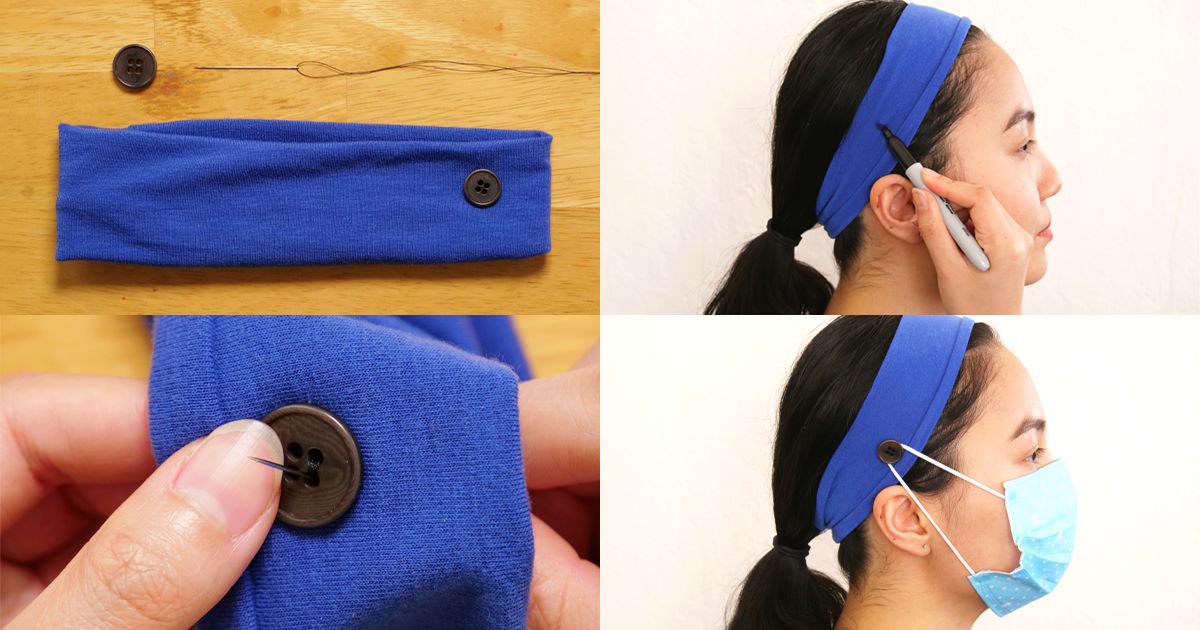The arrival of Covid-19 on the global scene has made it necessary for people to wear masks in public. While masks are an important piece of preventative virus apparel, they aren’t always easy to come by. Instead of endlessly searching major retailers for masks to become available, consider these mask hacks that help you create one at home using materials already on hand.
Just as important as having a face mask is knowing how to wear one comfortably and also knowing how to keep it clean and sanitary. The following 7 simple hacks to achieve this take hardly any time and are wonderful routes to improving the comfort of wearing a mask as well as making sure it effectively prevents the spread of germs. Everyday items like hair clips and buttons can make all the difference when it comes to creating a customized mask, while irons and washing machines are essential items for sanitizing masks at home.
Advertisement
How to make a quick and easy face mask with a paper towel filter
Simple sewing skills are all you need to create this DIY face mask from leftover fabric and a paper towel. Pick a pleasing fabric pattern and color, then stitch it into a sleeve. Once the sleeve is ironed flat, a sheet of paper towel can be inserted and easily replaced every time you wear the mask. Hair ties make for quick and comfortable connection points on each side of this mask and fit seamlessly over the ears. Learn to make this in just minutes by checking out the step-by-step guide here.
Simple sewing skills are all you need to create this DIY face mask from leftover fabric and a paper towel. Pick a pleasing fabric pattern and color, then stitch it into a sleeve. Once the sleeve is ironed flat, a sheet of paper towel can be inserted and easily replaced every time you wear the mask. Hair ties make for quick and comfortable connection points on each side of this mask and fit seamlessly over the ears. Learn to make this in just minutes by checking out the step-by-step guide here.
Wash fabric masks in hot water
Cloth face coverings and masks are important barriers against germs, but to keep them sanitary, the CDC recommends washing them daily. Sanitizing cloth face masks is as simple as running them through a hot or sanitizing cycle in the washer with the recommended amount of detergent. If the face mask being washed includes sewn-in elastic straps, consider zipping the mask up in a washable bag to protect the elastic. Once you've washed your mask, run it through a traditional drying cycle; then it's ready to be worn again.
Cloth face coverings and masks are important barriers against germs, but to keep them sanitary, the CDC recommends washing them daily. Sanitizing cloth face masks is as simple as running them through a hot or sanitizing cycle in the washer with the recommended amount of detergent. If the face mask being washed includes sewn-in elastic straps, consider zipping the mask up in a washable bag to protect the elastic. Once you've washed your mask, run it through a traditional drying cycle; then it's ready to be worn again.

Cooktop Cove
Iron fabric masks to sanitize
Keeping a cloth face mask clean is important, not only for protecting yourself but also those you encounter out in public. A simple way to make sure your mask remains sanitary is to iron it on a steam setting daily to kill germs and deodorize the fabric. Steam ironing the cloth mask is a good way to protect the material that covers the filter while still eliminating bacteria that may have found its way into the fibers during daily excursions. Consider placing the mask in a plastic bag after steam ironing to further sanitize and protect until it's ready to be worn again.
Keeping a cloth face mask clean is important, not only for protecting yourself but also those you encounter out in public. A simple way to make sure your mask remains sanitary is to iron it on a steam setting daily to kill germs and deodorize the fabric. Steam ironing the cloth mask is a good way to protect the material that covers the filter while still eliminating bacteria that may have found its way into the fibers during daily excursions. Consider placing the mask in a plastic bag after steam ironing to further sanitize and protect until it's ready to be worn again.

Cooktop Cove
How to check if your face mask is effective
Wearing a face mask protects you from inhaling airborne germs and potentially dangerous particles throughout the course of your day. Testing the mask for effectiveness is essential if you're to stay healthy and protect those who are most vulnerable to contracting viruses. Try this simple lighter test to determine whether or not your paper and fabric masks are up to the task of protection. Position the mask as it will be worn, and breathe or blow heavily toward a lit lighter flame. If the flame goes out, the mask requires a double. If it stays lit, the mask can be considered effective. See how easy the test is here.
Wearing a face mask protects you from inhaling airborne germs and potentially dangerous particles throughout the course of your day. Testing the mask for effectiveness is essential if you're to stay healthy and protect those who are most vulnerable to contracting viruses. Try this simple lighter test to determine whether or not your paper and fabric masks are up to the task of protection. Position the mask as it will be worn, and breathe or blow heavily toward a lit lighter flame. If the flame goes out, the mask requires a double. If it stays lit, the mask can be considered effective. See how easy the test is here.
Secure a loose mask with a clip
Taking time to wear a face mask is a good first step in preventing the spread of illness. However, if your mask doesn’t fit correctly or is uncomfortable, it's more likely to be ineffective in the long run. If your mask fits too loosely, connect the elastic ear straps around the back of your head using a simple carabiner. A snap clip will be the easiest to both attach and remove the elastic straps and can be adjusted by flipping it over to fit your personal comfort level.
Taking time to wear a face mask is a good first step in preventing the spread of illness. However, if your mask doesn’t fit correctly or is uncomfortable, it's more likely to be ineffective in the long run. If your mask fits too loosely, connect the elastic ear straps around the back of your head using a simple carabiner. A snap clip will be the easiest to both attach and remove the elastic straps and can be adjusted by flipping it over to fit your personal comfort level.

Cooktop Cove
Sew buttons on a bandana to wear your mask without ear strain
One of the most common complaints among wearers of face masks is discomfort around the ears. Elastic straps that keep the mask in place tend to pull or strain around the backs of the ears and can lead to painful chaffing over time. When this is the case, sew two buttons onto either side of a comfortable headband or bandana, and use these attachment points to secure elastic straps instead. The buttons should sit about 1 inch above each ear to ensure the mask is positioned comfortably on the face.
One of the most common complaints among wearers of face masks is discomfort around the ears. Elastic straps that keep the mask in place tend to pull or strain around the backs of the ears and can lead to painful chaffing over time. When this is the case, sew two buttons onto either side of a comfortable headband or bandana, and use these attachment points to secure elastic straps instead. The buttons should sit about 1 inch above each ear to ensure the mask is positioned comfortably on the face.

Cooktop Cove
Attach your mask with hair clips to prevent ear strain
Wearing a face mask might keep germs at bay, but masks can also be uncomfortable. The same elastic bands that ensure your mask is blocking potentially dangerous bacteria from entering your body can often cause pain and discomfort behind your ears. Instead of searching for a more comfortable mask, thread the elastic straps through a hair clip, and pin the attachment points just above your ears instead. This is a quick and effective method to keep your mask secure while eliminating redness or pain behind your ears.
Wearing a face mask might keep germs at bay, but masks can also be uncomfortable. The same elastic bands that ensure your mask is blocking potentially dangerous bacteria from entering your body can often cause pain and discomfort behind your ears. Instead of searching for a more comfortable mask, thread the elastic straps through a hair clip, and pin the attachment points just above your ears instead. This is a quick and effective method to keep your mask secure while eliminating redness or pain behind your ears.
Advertisement

Cooktop Cove



